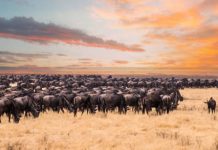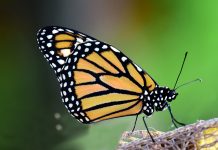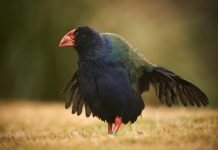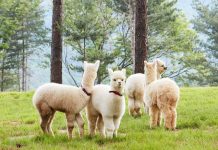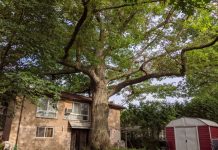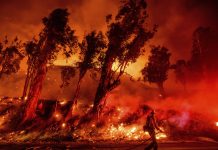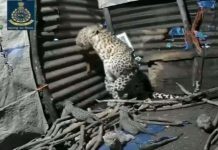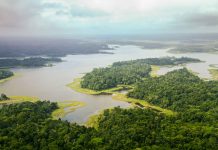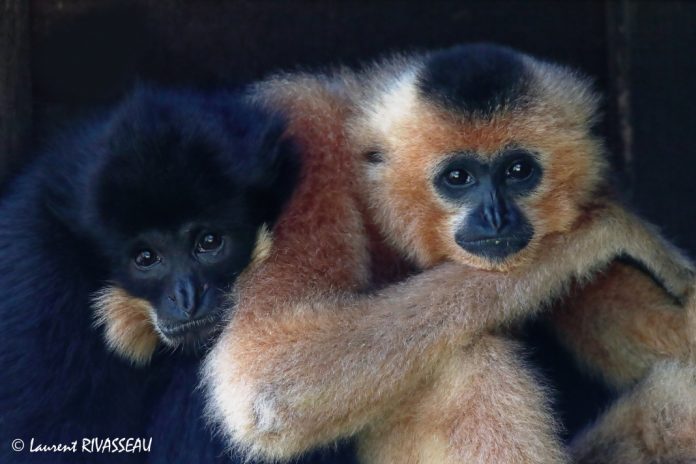According to the data of the International Union for Conservation of Nature, there are over 600 primate species and subspecies around the world and the number is still counting. Most of the world’s primate species are threatened of extinction, according to IUCN Red list more than half (54%) of the world’s primate species and subspecies with known conservation status are classified as threatened with extinction. But the effect of threat is more prominent and critical for some species than others.
Out of those primates, The Hainan gibbon is considered as the world’s rarest ape and one of the world’s rarest mammals with only 28 individuals remaining in the world now. Hainan gibbon (Nomascus hainanus) is found only on one tropical island at the southern tip of China and the species is restricted to a single, small patch of forest just 0.77 sq mi (2 sq km), as reported in 2017.
It was initialy considered a subspecies of the eastern black crested gibbon (Nomascus nasutus) from Hòa Bình and Cao Bằng provinces of Vietnam and Jingxi County in Guangxi Zhuang Autonomous Region, China. Later the molecular data, together with morphology and call differences, scientists suggested that it is a separate species.
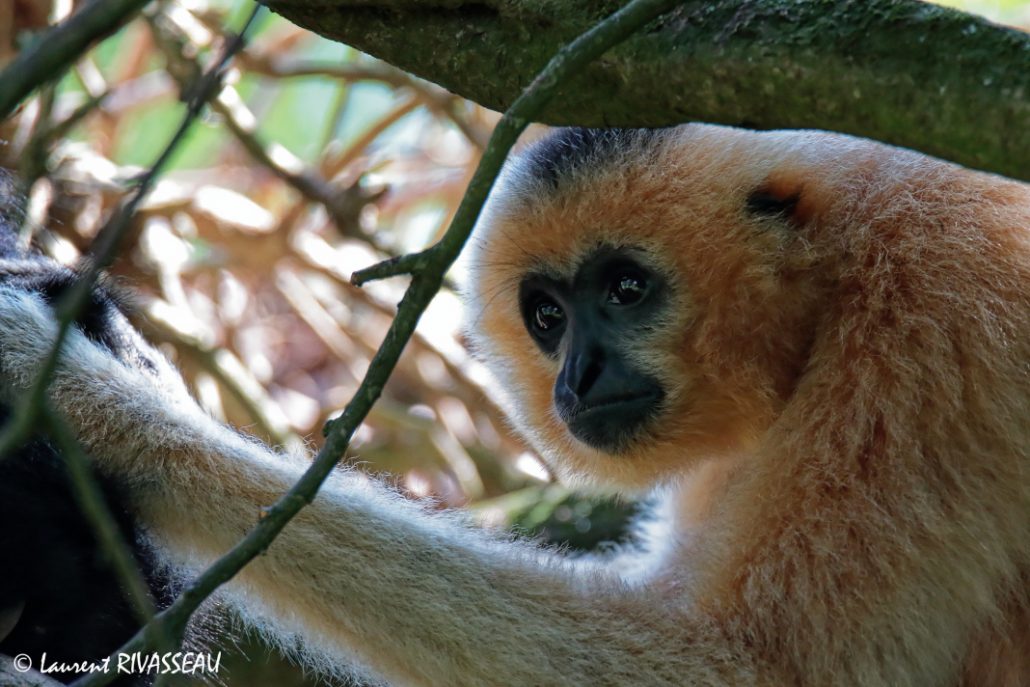
There are around 20 species of gibbons around the world, including the Hainan gibbon, are classified as apes. Unlike most monkeys, they lacks a tail. Hainan gibbons weigh between 12.78 and 22.03 lb (5.8-10 kg). The average weight of males is about 14.57 lb (6.61 kg); average weight of females is about 14.47 lb (6.563 kg). They are slender primates, possess with long arms and legs. The average head-to-body length in males is about 1.61 ft (49.16 cm) and females length average is about 1.59 ft (48.46 cm).
Due to the rarity of this species, lifespan of Hainan gibbons has not yet been reported. However, as estimated, Gibbons tend to live longer than most of other primates.
The Hainan Gibbons are arboreal, meaning these primates live exclusively on the trees. The body of Hainan gibbons are adopted and specialized for living in the forest canopy like other gibbon species. Their most common form of locomotion is “brachiation”, whereby, they propel themselves forward from branch to branch, using their forearms. Hainan gibbons have also been observed, walking, leaping, and climbing; they have never been observed on the ground.
They are active species during daylight hours, making them a “diurnal species”. Foraging, feeding, grooming, and playing occupy this time; they pause in the midday for a nap. At sunset, they get ready for bed.
Hainan gibbons are largely frugivorous (eat fruit) and folivorous (eat leaves), but gibbons are also known for their interest to snacking on insects, flowers and bird eggs.
Gibbons are the true king of the swingers and highly adapted to life in the trees. Their hands are like ‘hooks’, which enables them to suspend and hang-in for extended periods of time.
They also have long arms that they use to swing from branch to branch, the unique form of locomotion known as brachiation. They are extremely quick and can reach speed to 55 km/h (34 mph), when in clear areas, distance of up to 12 m in a one swing!
Most gibbon species reach sexual maturity in between 6 to 9 years old. It’s possible that Hainan gibbons mature earlier. In one instance, scientists observed a 5-1/2-year-old male driven from his group by other members, a forced exile likely led by the group’s alpha male. Scientists speculate that this banishment may have had more to do with limited resources necessary for the group’s survival than with the young male attaining sexual maturity and needing a kick in the bottom to get him to strike out on his own.
In the 1950s, more than 2000 individuals were estimated to remain throughout the island of Hainan. Sadly, Hainan gibbon numbers plummeted in the second half of the 20th Century.
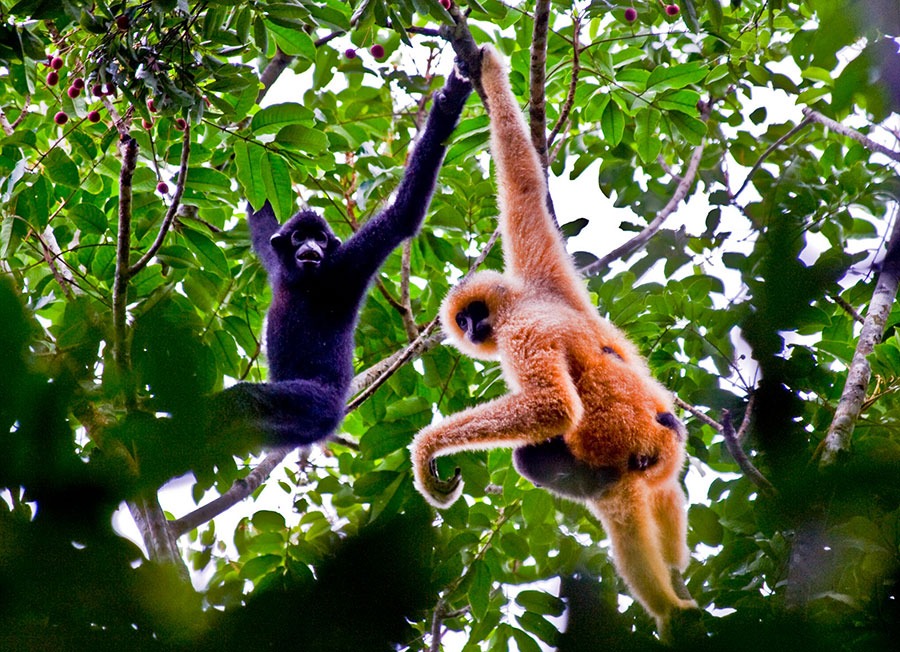
The reasons for this decline are largely due to developing rubber and commercial logging industries, the construction of roads, the human population boom (between 1950 and 2003), and a subsequent increase in human settlements are collectively contributed to wiping out the Hainan gibbon’s original lowland rainforest habitat. This willful destruction of habitat has also resulted in a split of gibbon populations, isolating them from one another and hindering successful reproduction within the species. A significant decline in genetic diversity (many of the remaining individuals are closely related to one another) also jeopardizes the species’ viability.
Although the current increasing rate of habitat loss has greatly diminished from decades of reckless disregard for the species’ survival and for the biodiversity of the island, the damage has been caused extensively—and the Hainan gibbon sits on the edge of extinction.
A study in 2003 found that 13 total gibbons split into two groups and two solitary males, and in 2004 only 12-19 Hainan gibbons were found exclusively in the Hainan Bawangling National Nature Reserve.
However, in the past 15 years, several conservation efforts were carried out by conservationists to save the Hainan gibbon. Through collaborations within Hainan University, Cloud Mountain Conservation, Arcus Foundation, International Union for Conservation of Nature, ZSL (Zoological Society of London) is working hard together to secure a future for this Critically Endangered species and the efforts are predicted to be help in the increase of the population of these species to be doubled within next 17 years.
Conservation research activities include the exploration of new monitoring technologies, investigating the possible survival of other remnant populations, and developing “win-win” solutions for gibbon conservation and human well-being by working closely with local communities to understand perceptions of biodiversity loss and livelihood needs to empower the sustainability of these efforts.
Cover Photo – Laurent Rivasseau
Reference
Facts about hainan gibbons. (n.d.). Retrieved from discoverwildlife.com: https://www.discoverwildlife.com/animal-facts/mammals/facts-about-hainan-gibbons/
Hainan black crested gibbon. (n.d.). Retrieved from wikipedia.org: https://en.wikipedia.org/wiki/Hainan_black_crested_gibbon
Hainan gibbon. (n.d.). Retrieved from neprimateconservancy.org: https://www.neprimateconservancy.org/hainan-gibbon.html
How many primates are there. (n.d.). Retrieved from ippl.org: https://www.ippl.org/gibbon/blog/how-many-primates-are-there/
Only 25 hainan gibbons remain what next for the worlds rarest primate. (n.d.). Retrieved from theconversation.com: https://theconversation.com/only-25-hainan-gibbons-remain-what-next-for-the-worlds-rarest-primate-71454
Primates in Peril. (n.d.). Retrieved from static1.1.sqspcdn.com: http://static1.1.sqspcdn.com/static/f/1200343/25117808/1403888374823/Primates_in_Peril_2012-2014_Full_Report.pdf?token=np%2FvrLU2McquMwTdbblz7DYdq%2BM%3D
Roos, C., Thanh, V., Walter, L., & Nadler, T. (2007). Molecular systematics of Indochinese primates. Vietnamese Journal of Primatology.

